Clancy Tucker's Blog, page 173
October 8, 2017
9 October 2017 - THE CU CHI TUNNELS OF VIETNAM
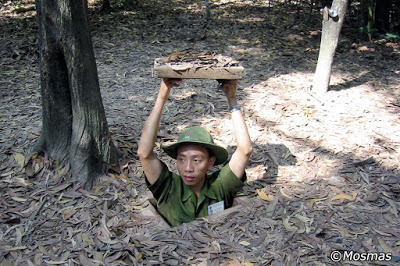
THE CU CHI TUNNELSOF VIETNAM
G'day folks,
The tunnels of Củ Chi are an immense network of connecting underground tunnels located in the Củ Chi District of Ho Chi Minh City, Vietnam, and are part of a much larger network of tunnels that underlie much of the country.
In order to combat better-supplied American and South Vietnamese forces during the Vietnam War, Communist guerrilla troops known as Viet Cong (VC) dug tens of thousands of miles of tunnels, including an extensive network running underneath the Cu Chi district northwest of Saigon. Soldiers used these underground routes to house troops, transport communications and supplies, lay booby traps and mount surprise attacks, after which they could disappear underground to safety. To combat these guerrilla tactics, U.S. and South Vietnamese forces trained soldiers known as “tunnel rats” to navigate the tunnels in order to detect booby traps and enemy troop presence. Now part of a Vietnam War memorial park in Ho Chi Minh City (formerly Saigon), the Cu Chi tunnels have become a popular tourist attraction.
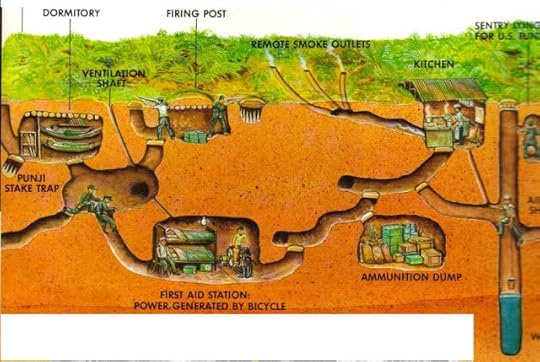
Digging the Cu Chi Tunnels
Communist forces began digging a network of tunnels under the jungle terrain of South Vietnam in the late 1940s, during their war of independence from French colonial authority. Tunnels were often dug by hand, only a short distance at a time. As the United States increasingly escalated its military presence in Vietnam in support of a non-Communist regime in South Vietnam beginning in the early 1960s, North Vietnamese and Viet Cong troops (as Communist supporters in South Vietnam were known) gradually expanded the tunnels. At its peak during the Vietnam War, the network of tunnels in the Cu Chi district linked VC support bases over a distance of some 250 kilometers, from the outskirts of Saigon all the way to the Cambodian border.
As the United States relied heavily on aerial bombing, North Vietnamese and VC troops went underground in order to survive and continue their guerrilla tactics against the much better-supplied enemy. In heavily bombed areas, people spent much of their life underground, and the Cu Chi tunnels grew to house entire underground villages, in effect, with living quarters, kitchens, ordnance factories, hospitals and bomb shelters. In some areas there were even large theaters and music halls to provide diversion for the troops (many of them peasants) and their supporters.

War in the Cu Chi Tunnels In addition to providing underground shelter, the Cu Chi tunnels served a key role during combat operations, including as a base for Communist attacks against nearby Saigon. VC soldiers lurking in the tunnels set numerous booby traps for U.S. and South Vietnamese infantrymen, planting trip wires that would set off grenades or overturn boxes of scorpions or poisonous snakes onto the heads of enemy troops. To combat these guerrilla tactics, U.S. forces would eventually train some soldiers to function as so-called “tunnel rats.” These soldiers (usually of small stature) would spend hours navigating the cramped, dark tunnels to detect booby traps and scout for enemy troops.
In January 1966, some 8,000 U.S. and Australian troops attempted to sweep the Cu Chi district in a large-scale program of attacks dubbed Operation Crimp. After B-52 bombers dropped a large amount of explosives onto the jungle region, the troops searched the area for enemy activity but were largely unsuccessful, as most Communist forces had disappeared into the network of underground tunnels. A year later, around 30,000 American troops launched Operation Cedar Falls, attacking the Communist stronghold of Binh Duong province north of Saigon near the Cambodian border (an area known as the Iron Triangle) after hearing reports of a network of enemy tunnels there.
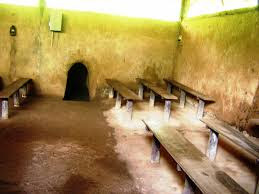
After bombing attacks and the defoliation of rice fields and surrounding jungle areas with powerful herbicides, U.S. tanks and bulldozers moved in to sweep the tunnels, driving out several thousand residents, many of them civilian refugees.
North Vietnamese and VC troops slipped back within months of the sweep, and in early 1968 they would use the tunnels as a stronghold in their assault against Saigon during the Tet Offensive.

Tourism in the Cu Chi Tunnels
In all, at least 45,000 Vietnamese men and women are said to have died defending the Cu Chi tunnels over the course of the Vietnam War. In the years following the fall of Saigon in 1975, the Vietnamese government preserved the Cu Chi tunnels and included them in a network of war memorial parks around the country.
Visitors to Vietnam can now crawl through some of the safer areas of the tunnels, view command centers and booby traps, fire an AK-47 rifle on a firing range and even eat a meal featuring typical foods that soldiers living in the tunnels would have eaten.

Clancy's comment: Amazing, eh? I've just read a book about them, written by two former US soldiers. Necessity is the mother of invention they say.
I'm ...


Published on October 08, 2017 13:42
October 7, 2017
8 October 2017 - WINDSCREEN NOTES

WINDSCREEN NOTES
G'day folks,
Ever left a note on a windscreen? Well, check out these angry messages.






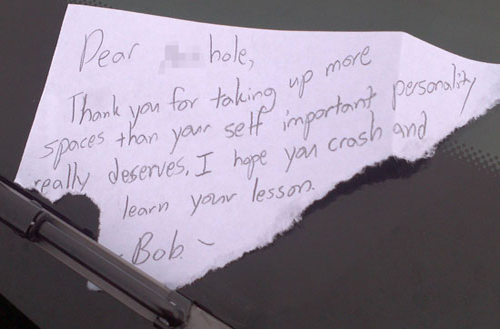




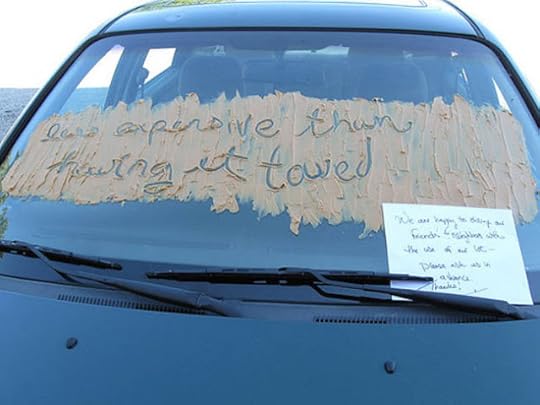




Clancy's comment: Mm ... Where is a scrap of paper when you need it?
I'm ...
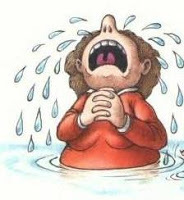

Published on October 07, 2017 15:18
October 6, 2017
7 October 2017 - SOME FACTS ABOUT BABOONS

G'day folks,
Baboons are African and Arabian Old World monkeys belonging to the genus Papio, part of the subfamily Cercopithecinae. The five species are some of the largest non-hominoid members of the primate order; only the mandrill and the drill are larger.
Baboons are noisy and sociable animals. They exhibit many behavioral traits that are considered to be 'human-like'. The bond between mother and infant baboon is very special, for example, and they follow a daily routine much like our own. Baboons are highly adaptable, living in a variety of habitats throughout Central Africa.
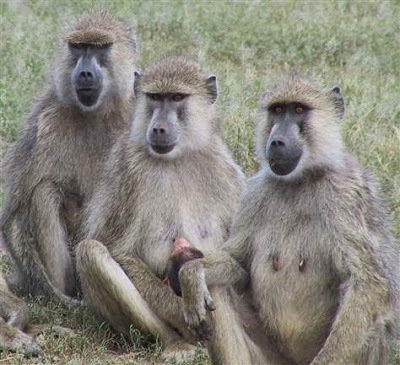
Quick FactsType: Mammal (primate)Diet: OmnivoreLife span: 15-30 yearsSize: 50-76 cm (height)Weight: 14-45 kgHabitat: Forests, plains, rocky areas, and savannasRange: AfricaScientific name: PapioAmazing Facts About the BaboonBaboons are social primates who tend to live in groups of around 50 individuals (groups can be up to 300 though!). They will be routinely seen participating in social behaviours such as grooming and food sharing.Baboons are primarily vegetarian however they will eat insects, and occasionally fish, birds and small mammals.Baboons have a range of different vocalisations for communicating with each other. Over 30 distinct vocalisations including grunts and screams are used in addition to a plethora of non-vocal gestures such as shrugging and lip smacking.There are five species of baboons. The two most common species, olive baboons and yellow baboons, live in East Africa.Baboons have loose cheeks which allow them to gather food while foraging to eat later once they return to an area of safety.Baboons’ daily routine is somewhat similar to our own. They tend to wake up around 7.30am. They spend some time in their group before going out to forage for food. They spend the daylight hours foraging, eating, resting and grooming, before heading back to their sleeping areas at night.Females tend to give birth every other year. They usually have one infant and their gestation period is 6 months. The bond between mother and infant baboon is very special. The mother will carry the young until he or she is able to ride on her back. They are in constant contact for the first few months, and the mother is very attentive. Only once an infant reaches around 4 months of age will they be allowed to play and interact with other young baboons.Baboons are very strong animals and have sharp canine teeth similar in length to lions. They will however try to avoid fighting by using intimidating vocalisations and gestures.The Guinea baboon is the smallest baboon species, while the Chacma baboon is the largest.The baboon was revered in Ancient Egyptian culture, being admired for its intelligence. The baboon was also the symbol of the god Thoth, and was sometimes depicted as a guardian of the dead in the underworld.Baboons have co-existed with human ancestors for many millions of years. The oldest baboon fossil is a skull found in South Africa that is thought to be two millions years old.
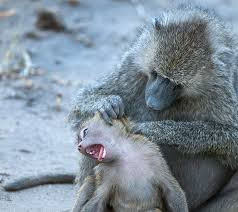

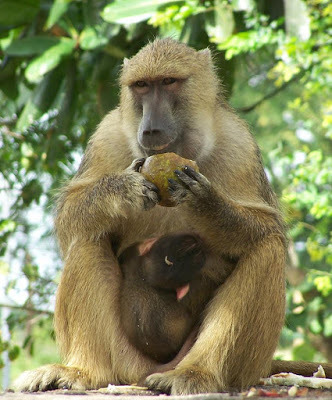

Clancy's comment: Wow, fossils found 2 million years-old!
I'm ...


Published on October 06, 2017 14:05
October 5, 2017
6 October 2017 - SUPERCARS ROTTING IN A FOREST
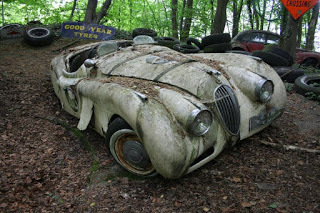
SUPERCARS ROTTING IN A FOREST
G'day folks,
This post might stun you, and might be a painful sight for classic car enthusiasts.
Jaguar, Rolls-Royce, Porsche, Mercedes-Benz, BMW; just a few of the iconic names whose logos you would never expect to find on vehicles in such a sorry state. But what might really shock you is that these unfortunate automobiles are not actually abandoned, and their owner is in fact a classic car lover and expert himself, who has deliberately left these cars here at the mercy of mother nature.

Michael Fröhlich is the kind of guy who can track down a Mercedes limousine that once ferried around Adolf Hitler. A former fashion designer, racer, philosopher and artist among other things, these days, Michael is best-known as a unique classic car dealer and expert restorer.

Yet he drives around his hometown of Düsseldorf in a charred Rolls Royce that was all but incinerated when his dealership burnt down in 2005. He has written several reference books and travelled the world searching for rare automobiles and tracking down lost collections.

We are more or less in his backyard, or what he likes to call his Auto Skulpturen Park, a museum/ sculpture park of sorts in the Neander Valley near Mettmann, Germany. Surrounded by a security fence in the wooded hillside next to Fröhlich’s house, fifty classic cars were parked here when the car enthusiast turned 50 in the year 2000.

Each and every car is from the year he was born, 1950, and was personally tracked down and purchased by Michael himself. “They’re like my brothers,” Fröhlich told Spiegel in 2009. Many were still roadworthy when they were parked on his property, never to be driven again.

A surreal showcase of dream cars nestled in the forest, unpolished, exposed to the elements, some even crashed into trees and others half buried in mud– this was his extravagant 50th birthday present to himself, a grand artistic display of rotting automobile history.
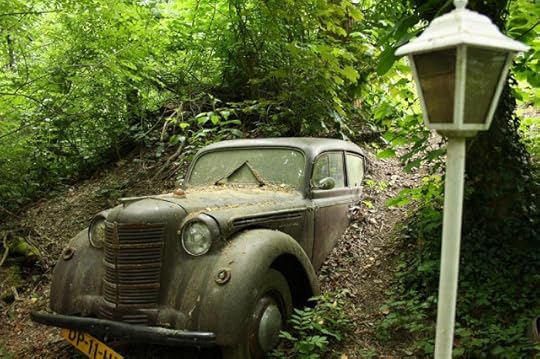
“Nature is stronger than technology, and that I will show here,” said Michael, who has no doubt succeeded in displaying the power of nature that triumphs over even some of the most revered examples of man-made machinery.
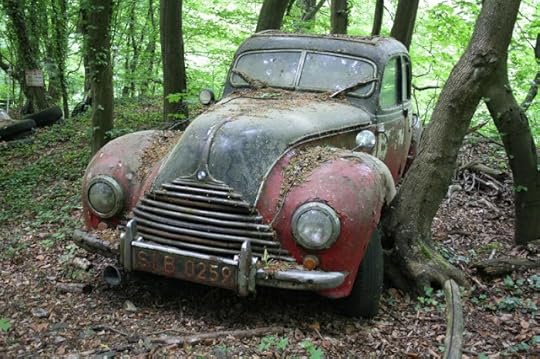
TV crews, photographers and fans were invited to the opening in the summer of 2000, but from what I can gather, this “museum” has rarely been open to the public since. We’re taking a virtual tour thanks to the photographs of father and son car collectors and experts, Arnoud and Ard op de Weegh from their book on special car cemeteries in Europe.
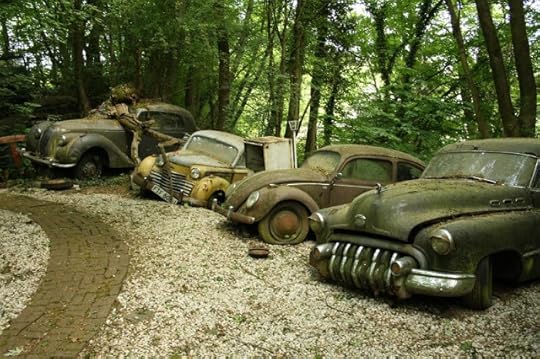
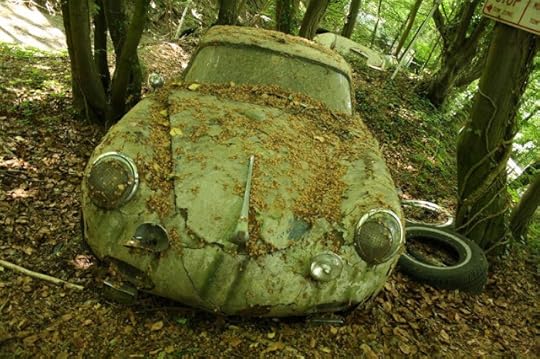

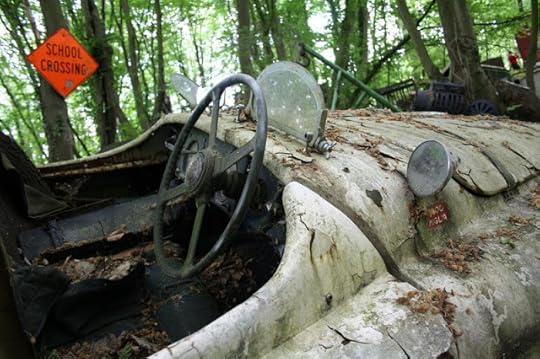

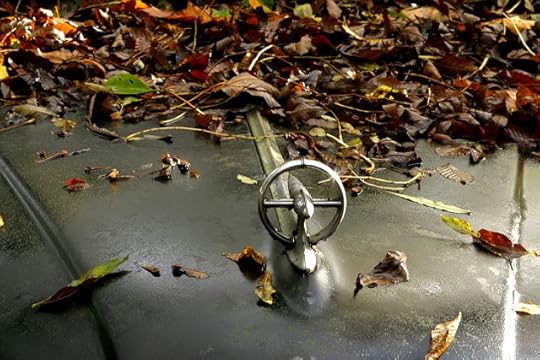

Clancy's comment: Gob smacking! I wonder who has driven and sat in these cars during their lifetime.
I'm ...
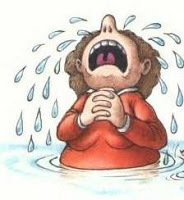

Published on October 05, 2017 14:06
October 4, 2017
5 October 2017 - ADVICE FROM CHARLIE BROWN

ADVICE FROM CHARLIE BROWN
G'day folks,
Welcome to some wisdom from the famous Charlie Brown.



















Clancy's comment: Thanks, Charlie Brown. Wise little bloke, eh?
I'm ...

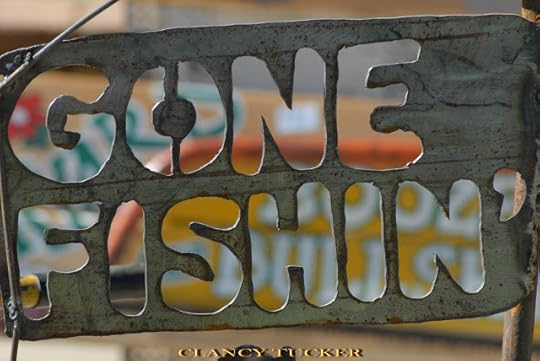
Published on October 04, 2017 14:16
October 3, 2017
4 October 2017 - THE SUEZ CRISIS

THE SUEZ CRISIS
G'day folks,
I wonder if modern kids have heard or read about this scenario. The Suez Crisis, also named the Tripartite Aggression and Operation Kadesh or Sinai War, was an invasion of Egypt in late 1956 by Israel, followed by the United Kingdom and France.
On October 29, 1956, Israeli armed forces pushed into Egypt toward the Suez Canal after Egyptian president Gamal Abdel Nasser (1918-70) nationalized the canal in July of that same year, initiating the Suez Crisis. The Israelis soon were joined by French and British forces, which nearly brought the Soviet Union into the conflict, and damaged their relationships with the United States. In the end, the British, French and Israeli governments withdrew their troops in late 1956 and early 1957.

Suez Crisis: Background
The catalyst for the joint Israeli-British-French attack on Egypt was the nationalization of the Suez Canal by Egyptian leader Gamal Abdel Nasser in July 1956. The situation had been brewing for some time. Two years earlier, the Egyptian military had begun pressuring the British to end their military presence (which had been granted in the 1936 Anglo-Egyptian Treaty) in the canal zone. Nasser’s armed forces also engaged in sporadic battles with Israeli soldiers along the border between the two countries, and the Egyptian leader did nothing to conceal his antipathy toward the Zionist nation.
Supported by Soviet arms and money, and furious with the United States for reneging on a promise to provide funds for construction of the Aswan Dam on the Nile River, Nasser ordered the Suez Canal seized and nationalized. The British were angry with the move and sought the support of France (which believed that Nasser was supporting rebels in the French colony of Algeria) and Israel (which needed little provocation to strike at the enemy on its border) in an armed assault to retake the canal.

Suez Crisis: 1956-57
The Israelis struck first, on October 26, 1956. Two days later, British and French military forces joined them. Originally, forces from the three countries were set to strike at once, but the British and French troops were delayed.Behind schedule, but ultimately successful, the British and French troops took control of the area around the Suez Canal. However, their hesitation had given the Soviet Union–also confronted with a growing crisis in Hungary–time to respond.
The Soviets, eager to exploit Arab nationalism and gain a foothold in the Middle East, supplied arms from Czechoslovakia to the Egyptian government beginning in 1955, and eventually helped Egypt construct the Aswan Dam on the Nile River after the United States refused to support the project. Soviet leader Nikita Khrushchev (1894-1971) railed against the invasion and threatened to rain down nuclear missiles on Western Europe if the Israeli-French-British force did not withdraw.
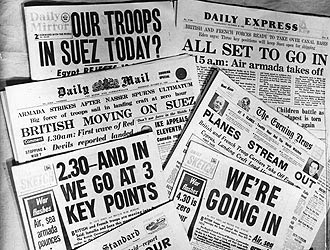
The response of President Dwight Eisenhower’s administration was measured. It warned the Soviets that reckless talk of nuclear conflict would only make matters worse, and cautioned Khrushchev to refrain from direct intervention in the conflict. However, Eisenhower (1890-1969) also issued stern warnings to the French, British and Israelis to give up their campaign and withdraw from Egyptian soil. Eisenhower was upset with the British, in particular, for not keeping the United States informed about their intentions.
The United States threatened all three nations with economic sanctions if they persisted in their attack. The threats did their work. The British and French forces withdrew by December; Israel finally bowed to U.S. pressure in March 1957.

In the aftermath of the Suez Crisis, Britain and France found their influence as world powers weakened.
 Clancy's comment: It could have been a lot worse I guess.
Clancy's comment: It could have been a lot worse I guess.I'm ...


Published on October 03, 2017 12:56
October 2, 2017
3 October 2017 - AMAZING FACTS ABOUT THE BUTTERFLY

AMAZING FACTS ABOUT THE BUTTERFLY
G'day folks,
I think most people love these creatures, but did you know that butterfly wings are not solely for flight; they also act as miniature solar panels.



The word butterfly was first used to describe a butter coloured insect- the brimstone butterfly. ‘Butterfly’ eventually came to include all the species and the brimstone acquired its present name which relates to the colour of sulphur.A butterfly has a small body, made of three parts – the head, thorax and abdomen. Butterflies have two large eyes, which are made of many, many small parts. These are called ‘compound eyes’.They have two antennae on top of their heads, which they use to feel, smell and to hear. A butterfly’s mouth is a long tube, through which it sucks the sweet nectar from flowers. When the butterfly does not want to eat, it rolls the tube up!Butterflies have three pairs of legs. Their feet have little claws to help them stand on flowers. Some butterflies, like the peacock, only use four of their legs, carrying the two front legs against their bodies.The wings of the butterfly are made of hard tubes covered with thin tissue. The wings are covered with scales, which are like a fine dust. Butterflies can only feed or fly when their bodies are warmed to at least 30°C, and they have to gain this from the sunshine using their wings. Butterflies are often seen basking with their wings open wide, as they gain heat. They adjust the area exposed to the sun by overlapping their wings or angling them towards the sunshine. The veins located in the wings then carry the heat to the body. Colour helps the butterfly with their temperature control. Dark colours absorb more heat, than light colours. Some butterflies such as the Blues have a shiny underside to their wing, which can help them reflect heat.Some butterflies can fly 50km/h or faster. Slow flying butterflies probably fly about 10km/h.The scales form bright patterns, sometimes with a hidden ultraviolet pattern to attract mates. The bright colours also act as a deterrent to predators eating them. The scales may also form patterns that help the butterflies to blend into their background to escape predators.During fall migration migrating Monarchs have been seen flying by tall buildings such as the Empire State Building hundreds of metres high. Butterflies are picked up by storm fronts and moved 100’s of km, probably at altitudes of thousands of metres.


Clancy's comment: Amazing, eh? I love taking photographs of these creatures.
I'm ...


Published on October 02, 2017 13:04
October 1, 2017
2 October 2017 - FIRETRUCK GRAVEYARD IN FRANCE
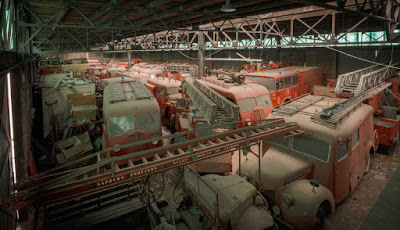
FIRETRUCK GRAVEYARD IN FRANCE
G'day folks,
W hat little boy didn’t dream of driving a big red firetruck? Today’s find from the world of urban abandonment feels particularly tragic– and a little bit like uncovering the tomb of childhood dreams. Not to be a downer or anything.

This Aladdin’s cave of rare automobiles is likely one of several. In the 1990s, the French fire departments raised funds in an effort to restore and preserve their retired old trucks to be sent off to museums but in the early 2000s, that initiative ran out of money and went bust. The trucks that weren’t in good enough condition were sentences to the scrapyard rather than being sold to the public, and the rest were sent to storage sites like this in the event that maybe, on the off chance, one day a museum might come along and save them.
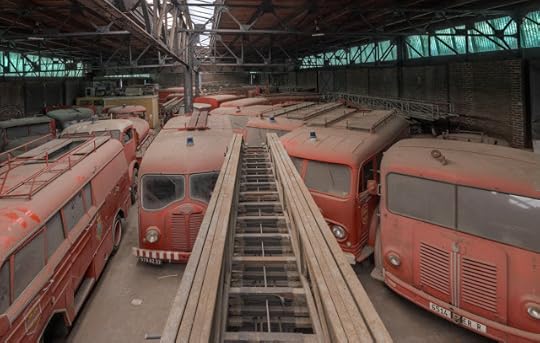
The good news is, exactly a year after Vincent took these photos, a firefighter museum opened up in Lyon, near the Swiss border in the East of France. The bad news is, fire departments across the whole of France were hoping to unload the burden of their old trucks and there’s only so many firetrucks that one museum can display. This particular warehouse is located somewhere near Le Havre, all the way across the country in the North of France.
Now, have a look at these treasures covered in dust.

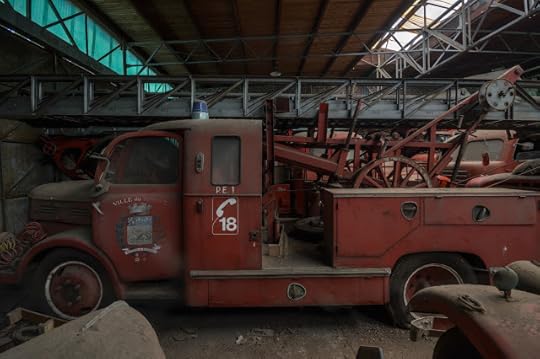
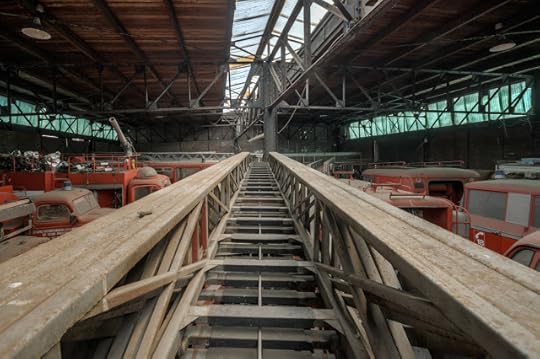
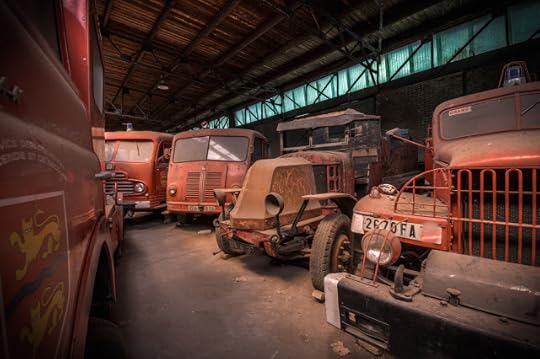
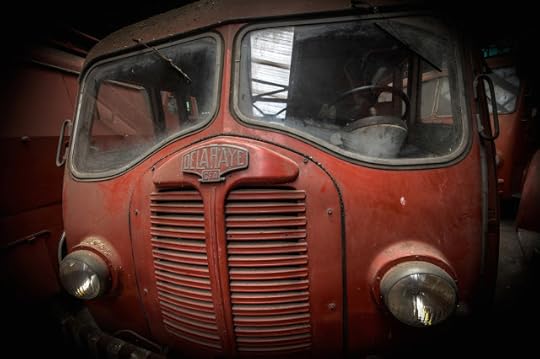
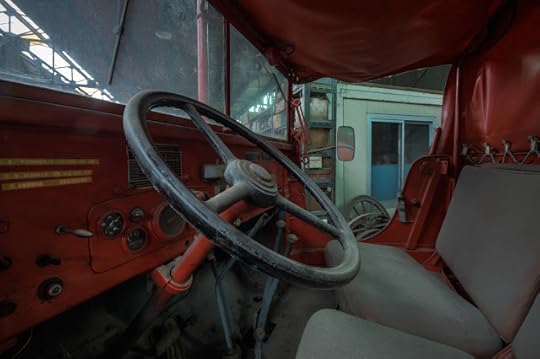
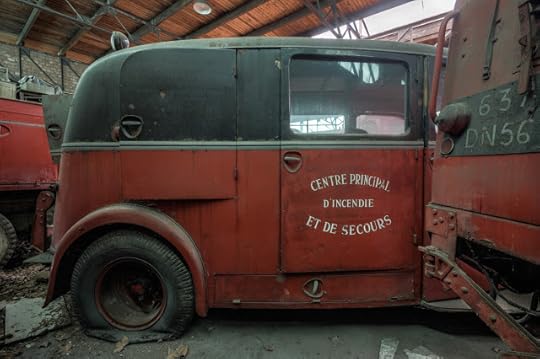

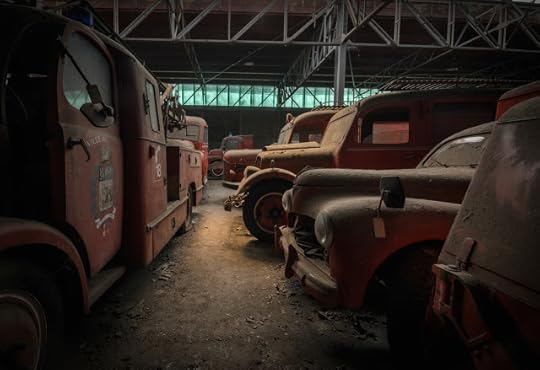

Clancy's comment: Wow, what a waste. The quality of these would have to be far better than what is produced today.
I'm ...


Published on October 01, 2017 13:17
September 30, 2017
1 October 2017 - WORTHY QUOTES

WORTHY QUOTES
G'day folks,
Yep, time for some inspiring words of wisdom.


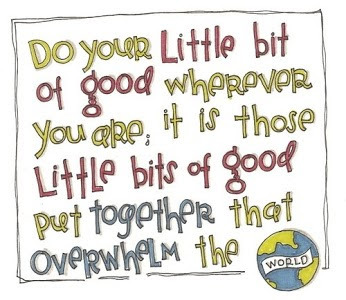













Clancy's comment: Mm ...
I'm ...


Published on September 30, 2017 14:22
September 29, 2017
30 September 2017 - HIDDEN VEHICLE TOMB IN NAPLES
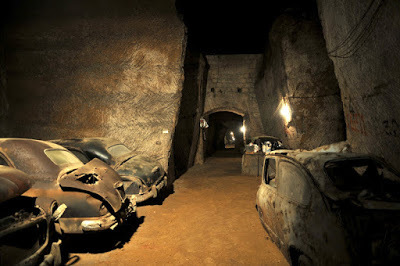
HIDDEN VEHICLE TOMB IN NAPLES
G'day folks,
N obody likes a visit to the car pound. It probably is one of my least favourite places to be on earth, but you wouldn’t have a hard time convincing me to pay a visit to this particular car pound, hidden 150ft below a piazza in the city of Naples, sealed off after WWII and forgotten about for more than 60 years.
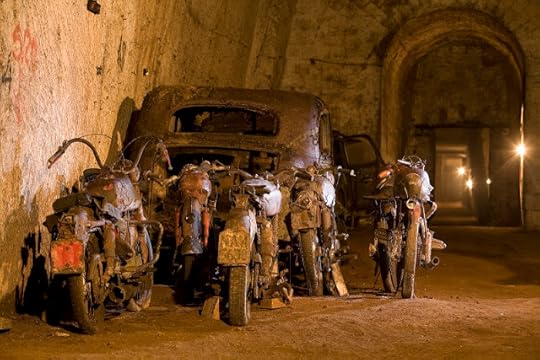
The place is filled with vintage cars, motorcycles and scooters dating back to the 40s and 50s, but the walls and tunnels they’re entombed in look ancient. And they almost are. Built in 1853 by Ferdinand II of Bourbon, the multilevel subterranean network was conceived as a sort of emergency escape route for the unpopular monarch who feared revolution. The vast underground tunnels would serve as a passageway large enough for his troops and horses to escape the palace and make it to the military barracks. The revolution never came, at least not before Ferdinand’s death in 1859, and the network was never completed.
In the 1930s, the overcrowded city decided to make use of the space again, this time as a vehicle impound lot for confiscated and even contraband vehicles– this is Naples after all, a city notoriously ruled by the maffia and capital of contraband.
They were sealed off sometime in the early 1950s, with a full parking lot of vehicles still inside.
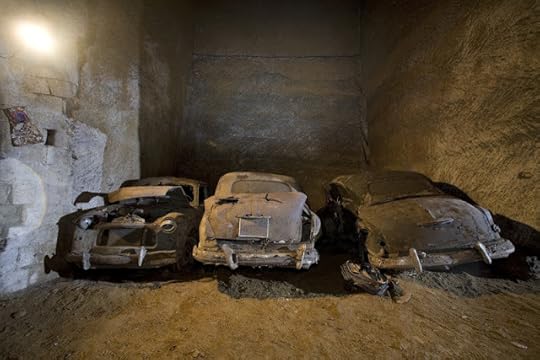
It wasn’t until the new millenium that this underground world would be accidentally re-discovered on a routine geologist excursion in 2005, checking the conditions and safety levels of the quarries that lie beneath a bustling neighbourhood in the heart of the city.
Along with the cars, trash heaps and strange creatures of the underworld, they also found WWII relics and a discarded fascist monument that had been made for Aurelio Padovani, an early leader of the movement.

A team of Neapolitan geologists began a monumental excavation project in the Bourbon Gallery, but it would take them another seven years and an unlikely tip from a 90 year-old WWII survivor to discover that the network was also the location of significant bomb shelter.
The excavations found remains of an infirmary, showers, mattresses, stoves and all manner of objects needed to survive down there as the city above was being destroyed by war. Naples was the most bombed Italian city during World War two, with an estimated 380 air strikes that killed almost 25,000 civilians.After the tunnels were cleared of trash and rubble, the Galleria Borbonica opened as an underground museum offering unique tours of the tunnels.
The tours range in difficulty, from a standard visit to something more adventurous…

A standard tour will take you down into old cisterns of the Bolla and Carmignano aqueducts, which were also used as air raid shelters during the Second War World. The adventurous tour goes down into another cistern still full of water and through an old metro gallery where you’ll embark on a raft and sail under the city.
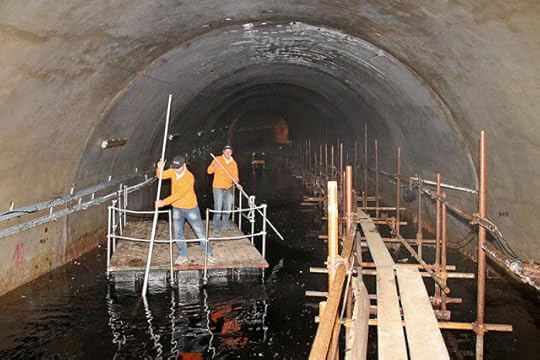
The “cavers” tour involves crawling along the ground through the aqueduct tunnels to reach the most beautiful cisterns full of water. As a bonus, you’ll also get to see the private bomb shelter of the ex Neapolitan President during the war and finish the tour by flying over a cistern harnessed to a zip-line.
Here are some more photographs.



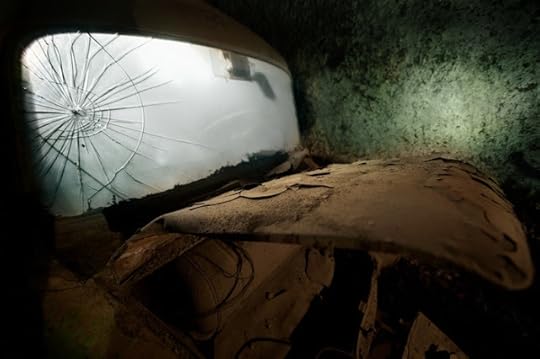
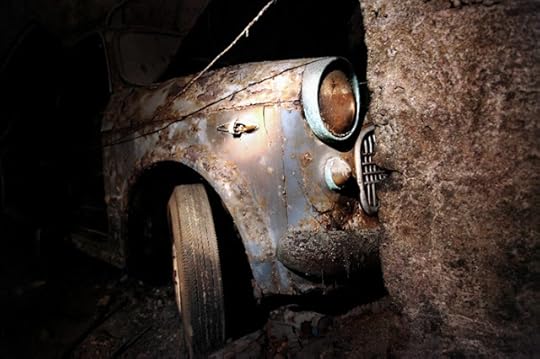
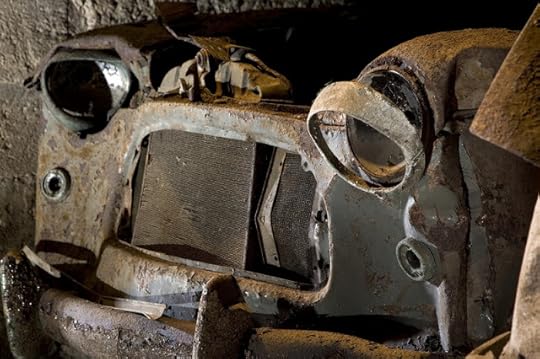

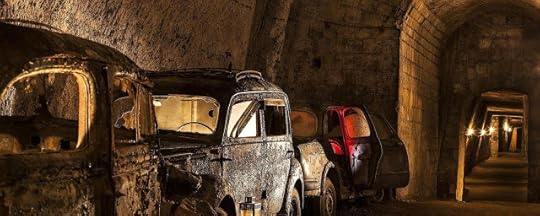

Clancy's comment: Amazing, eh? Imagine what was hidden by the Nazis after world War 11? Stay tuned, folks.
I'm ...


Published on September 29, 2017 14:26



